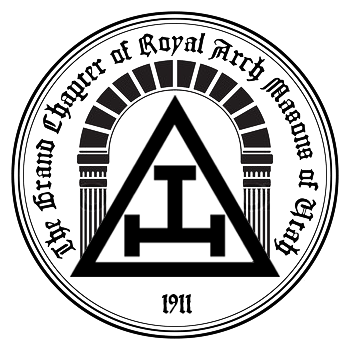About Royal Arch Masonry
Degrees of Capitular Masonry
- Mark Master Mason
- Past Master (Virtual)
- Most Excellent Master
- Holy Royal Arch
Development of Capitular Masonry
The ancient landmarks of 1813, emanating from the United Grand Lodge of England indicated “that pure Antient Masonry consists of three degrees and no more, viz., those of the Entered Apprentice, the Fellow Craft, and the Master Mason, including the Supreme Order of the Holy Royal Arch.” This should serve as a demonstration of the importance and high esteem which the Royal Arch Degree has been held in Freemasonry.
The actual founding of Royal Arch Masonry is unknown. Until 1797, Lodges performed the Chapter degrees, as well as some others that are now more familiarly part of the Knights Templar degrees, such as Order of the Red Cross and the Knights Templar degree.
Fredericksburg Lodge in Virginia lists a conferral of the Royal Arch degree on December 22, 1753.There are Chapters noted as giving certain degrees as far back as 1769 in Massachusetts (St. Andrew’s Royal Arch Chapter, Boston, MA, then known as Royall Arch Lodge), where the first Knights Templar degree was also conferred. Through a report compiled by the Committee on History and Research appointed by the Grand Chapter of Massachusetts in 1953 and 1954, it was found that St. Andrew’s Royal Arch Chapter was the oldest constituted Chapter in the Western Hemisphere, having been officially constituted April 9, 1769, though the records implied that the Chapter had been working prior to that date, and perhaps as early as 1762. The report also states that it is unknown whether the Fredericksburg lodge in Virginia conferred only the Royal Arch degree or the entire series of degrees.
The April 30, 1793 minutes of St. Andrew’s Royal Arch Chapter state that the so-called Excellent degree may have become the Past Master Degree, and that a similar degree by that name was conferred in 1790 by King Cyrus Chapter in Newburyport, MA. There was also a “Super Excellent” degree that simply disappeared from the St. Andrew’s minutes after December 21, 1797, and it was postulated that it may have become the Most Excellent Master degree, first noted in the same minutes on February 21, 1798.
The Past Master Degree was already in existence by 1797, and appears in a few monitors of the era: it is one of the four degrees in the Webb Monitor (1797) and appears in Jeremy Cross’ monitor in 1826.
The Most Excellent Master Degree is considered American in origin, although it has been postulated by Denslow and Turnbull that it was merely a rearrangement of preexisting material. They state that the first mention of it by name is when it was conferred on William S. Davis on August 28, 1769 in St. Andrew’s Royal Arch Lodge, and that the degrees came from lodges originating from the Irish Constitution. Similarities between this degree and material in the 19° in the Early Grand Rite of Scotland are also enumerated upon, and they conclude that the degree is from that Rite.
As for the Royal Arch Degree, Turnbull and Denslow contend that “It is the most widely known and talked about degree in the Masonic system” because it had been part of the third degree until the formation of the United Grand Lodge of England. However, its age can only be guessed at, and the first working of it was at the aforementioned Fredericksburg, Virginia. Denslow and Turnbull also quote earlier Masonic historian Robert Freke Gould’s assertion from documentation that the Royal Arch existed in Youghal (in County Cork, Ireland), some time prior to 1743. Dr. Fifield D’Assigny also wrote of it in Ireland in 1744.
Current Grand Chapter Officers
By-Laws of the Grand Chapter of Utah
General Grand Chapter informational video:
To learn more about General Grand Chapter click here.

